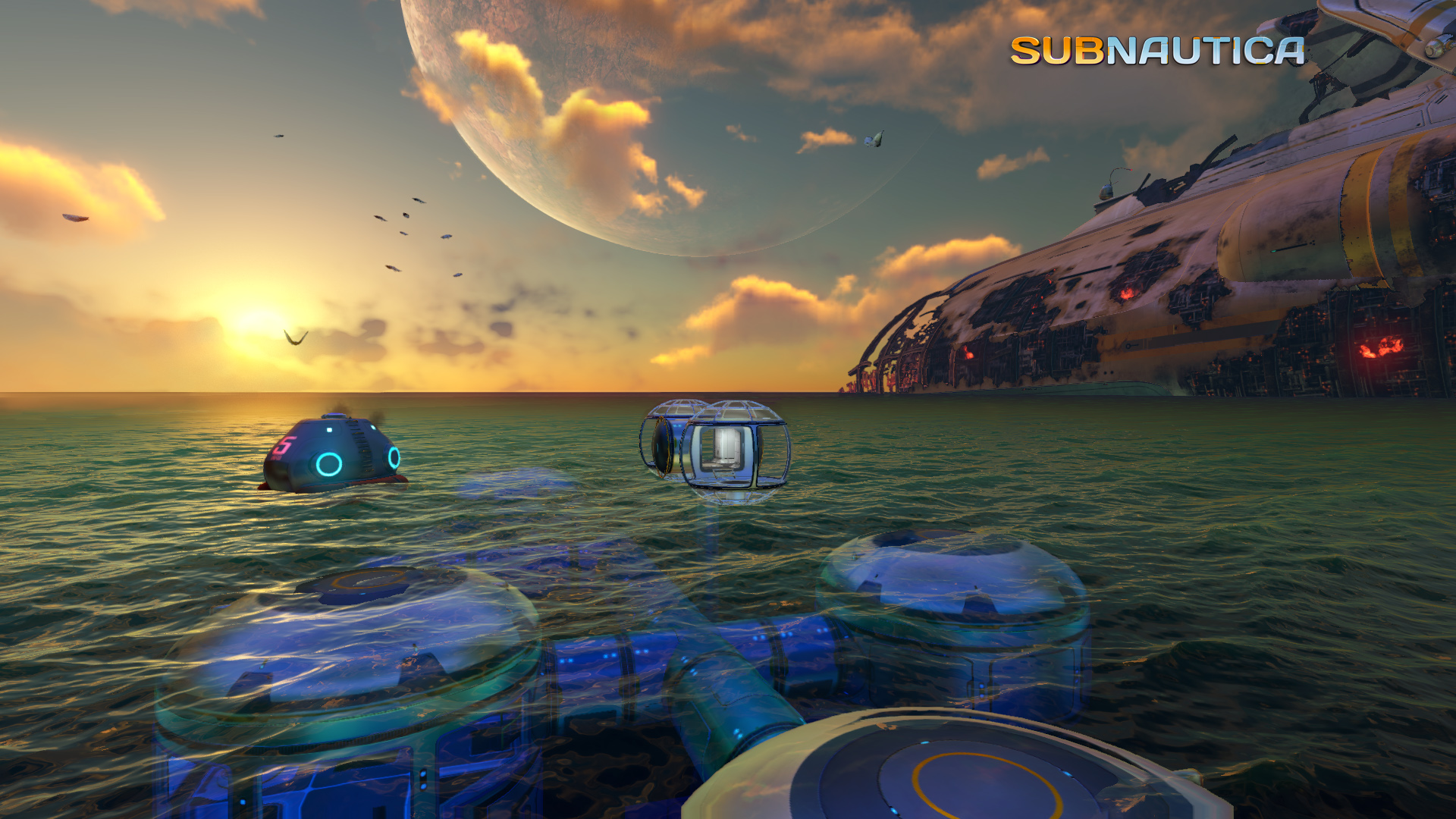Take a deep, dark dive into the Early Access game, Subnautica.
Type: Single-player
Genre: Open World, Sandbox, Adventure, Indie
Developer: Unknown Worlds Entertainment
Publisher: Unknown Worlds Entertainment
Release date: Late 2017 (provisional)


I’ve always had a fascination with the ocean. As a child on holiday, I would spend all my free time beach combing, looking for fossils, and generally milling about the water’s edge of the freezing and foreboding Irish Sea. This fascination was compounded by the exotic adventures of Jacque Cousteau on TV. His escapades on the high seas and exploration of the dark deep used to bedazzle and inspire me. This sense of wonder has never left me.
Gameplay Video
I’ve had Subnautica on my radar for some time. There seems to be a plethora of open world / crafting / building / survival games on Steam’s Early Access list. I love these kind of games, but have always been a bit leery of alpha builds with bare-bone feature sets and stability issues.
Subnautica has been in development for going on two years and has had numerous updates during that time. In fact, a new “silent running” patch has just been released, adding myriad bug fixes and enhancements to the Cyclops submarine. When the game went on sale a couple of weeks ago, I jumped at the chance to try out this promising title.

The game has four modes: Freedom, where oxygen and health are the only resources you need to manage; Survival, which is the same as Freedom Mode with the addition of food and hydration levels; Hardcore, which is much like Fallout 4’s Survival Mode, where the game ends if you die; and Creative, which disables all the real-life concerns and allows you to build whatever you want, with all blueprints unlocked from the get-go.
When playing the game in Freedom Mode, you appear to be the lone survivor of a crashed spaceship called the Aurora. You splash down on an aquatic planet in one of the ship’s life pods. The main objective is to explore the open-world environment and survive the dangers of the planet, which on first inspection, feels like a pristine oceanic wonderland, full of benign life forms and beautiful water-based flora.

Subnautica is very much an open-world sandbox game. Many reviewers have compared it to an underwater Minecraft. The thing that struck me from the beginning, and which raises this game above that comparison, is the story. Unlike Minecraft’s narrative arc, which felt awkward and tacked on, Subnautica’s story is immediately engaging and interesting. The opening set up and the genre’s implicit impulse for the gamer to explore the environment, slowly reveal that all is not what it seems to be on planet 4546b. The story is skillfully woven into the actual gameplay using distress beacons and audio logs, which not only drive the story but also unlock new blueprints. These allow you to add items to your ever-growing inventory of tools, equipment, and building materials.

Subnautica is yet another game that uses the Unity Engine. I’ve not played any other game that pushes this tech to quite the limit. Given the open-world nature of the game, I would have thought that UE4 might have been a better option. Once all the streaming assets have been loaded, however, the world is pretty and the gameplay fluid. As you explore the habitat, though, the joints begin to show, especially if you are travelling at high speed. On my potato PC, the engine struggles to load in the new geometry and LOD. I’ve found that the more you progress in the game, the more bloated your save data becomes, too. My user data folder stands at almost 1.2 GB. This shows that every alteration you make is stored in what appears to be some kind of node system (though I’m no programmer).
The developers are no doubt aware of this. Their public Trello board, used to track development tasks, openly shows that optimising the engine is on the roadmap, along with reaching out to the Unity Engine developers to look at the code base. I understand that in Early Access the expected polish of a full release is absent, given that the game isn’t even feature complete. I’ve grown up on poor frame rates and have a good tolerance for them. As long as the game is stable, I can live with the odd paging or texture pop-in issues. This is to be expected with a title pushing technology to the edge of its capabilities.
The best comparison I have to the overall feeling of playing Subnautica is that it is like an interactive aquatic version of The Martian. You have to “science the s***” out of the environment in order to survive. The developers have managed to hit the sweet spot between exploration and narrative drive. The four modes offer the player a good deal of choice between simply enjoying the world and creating bases, to making every move count in a hostile and forbidding watery planet. Any fan of open-world sandbox games will be captivated if they choose to take a deep dive into Subnautica.










